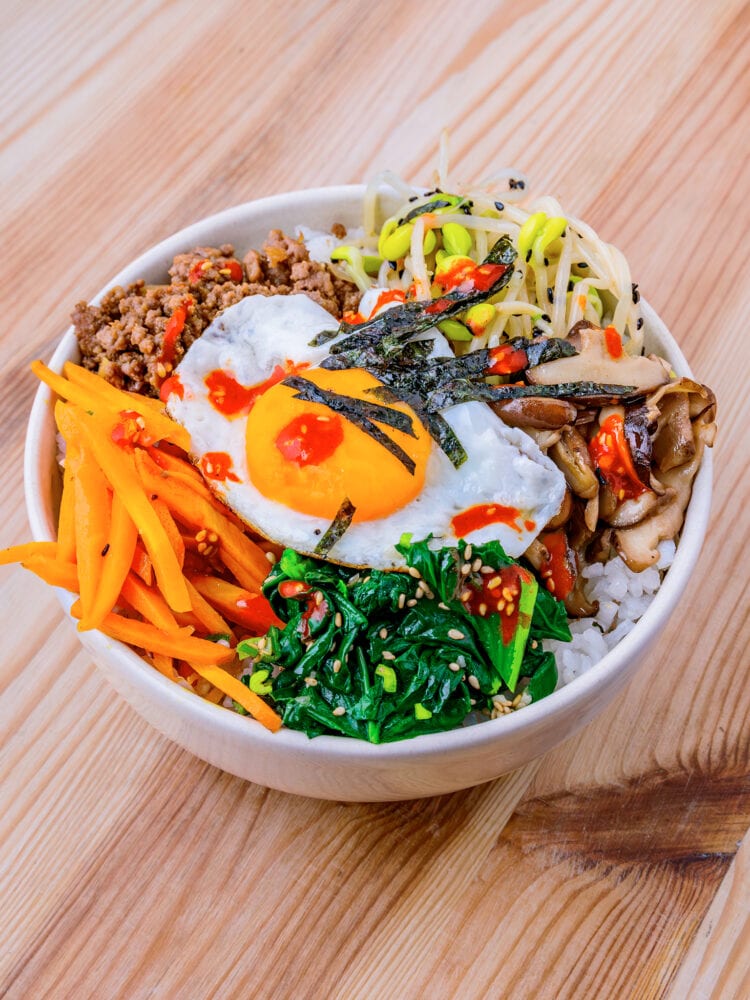Bibimbap stands out as a staple of Korean cuisine, offering a rich combination of flavors and textures. This dish, widely popular beyond Korea’s borders, appeals to a global audience, even among those unfamiliar with Korean culture.
What is Bibimbap?
Bibimbap, literally “rice mixed with meat and an assortment of vegetables”, is the perfect embodiment of customization and adaptability in Korean cuisine.
This dish allows for a multitude of variations to suit personal tastes and dietary needs, ranging from Bibimbap enriched with microgreens to that served in a dolsot (heated stone bowl) or a yangpun (large traditional bowl), thus offering a version adapted to every occasion.
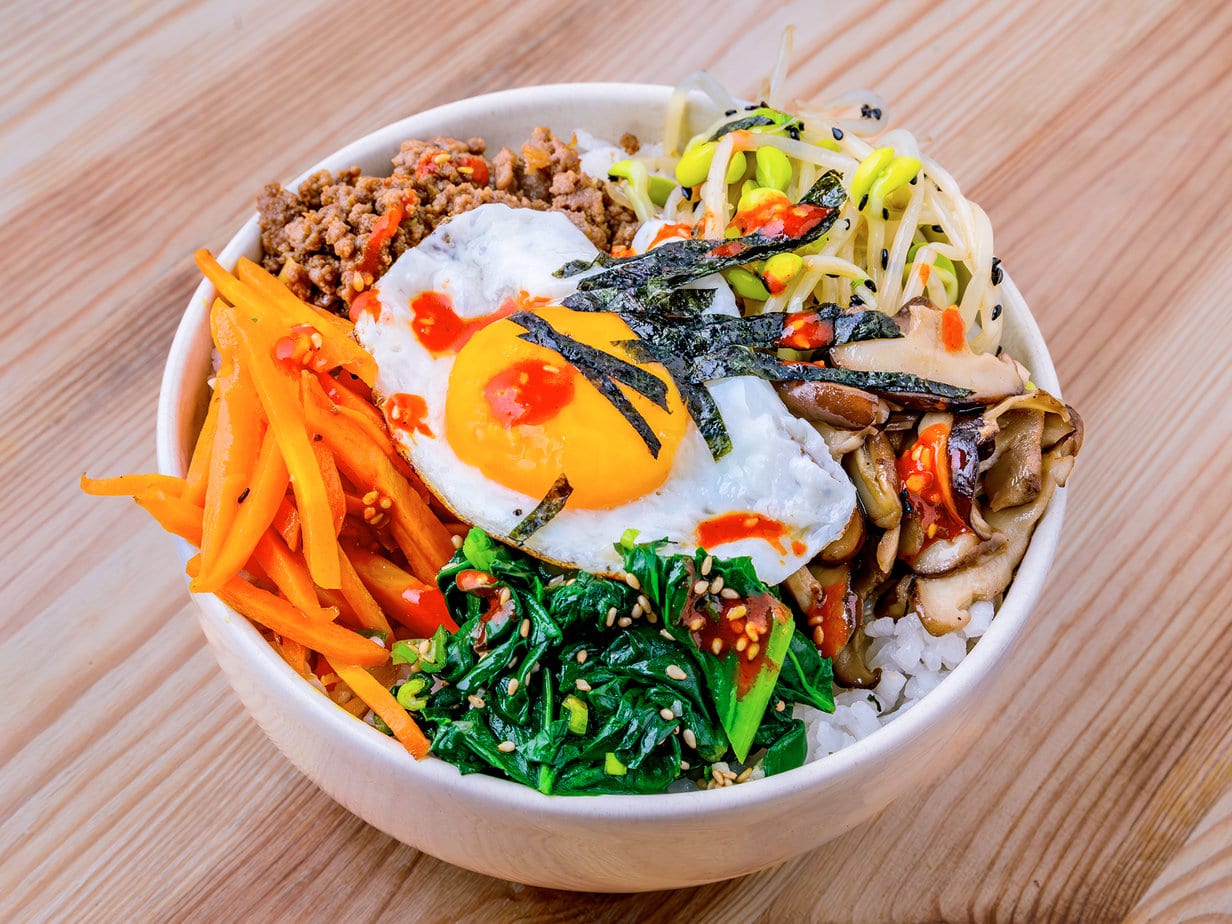
While traditional recipes often include raw beef and egg yolk among other vegetables, preparation with cooked ingredients is also common. At the heart of this dish is a bowl of rice garnished with namul (sautéed and seasoned vegetables), gochujang (fermented chili paste), and sometimes yukhoe (seasoned raw beef), where Bibim
and Bap
merge to create a harmonious whole.
Let’s not forget the famous bibimbap sauce
With delicious hotteoks for dessert, it’s just perfect
Before savoring, it is customary to vigorously mix all the components, marrying their unique flavors into an exquisite taste experience.
Banchan: Essential Allies for a Successful Bibimbap
In Korean cuisine, banchan, a variety of vegetable side dishes ranging from kimchi (spicy fermented cabbage) to pickled, sautéed, or steamed vegetables, play an essential role during meals by providing flavor and texture.
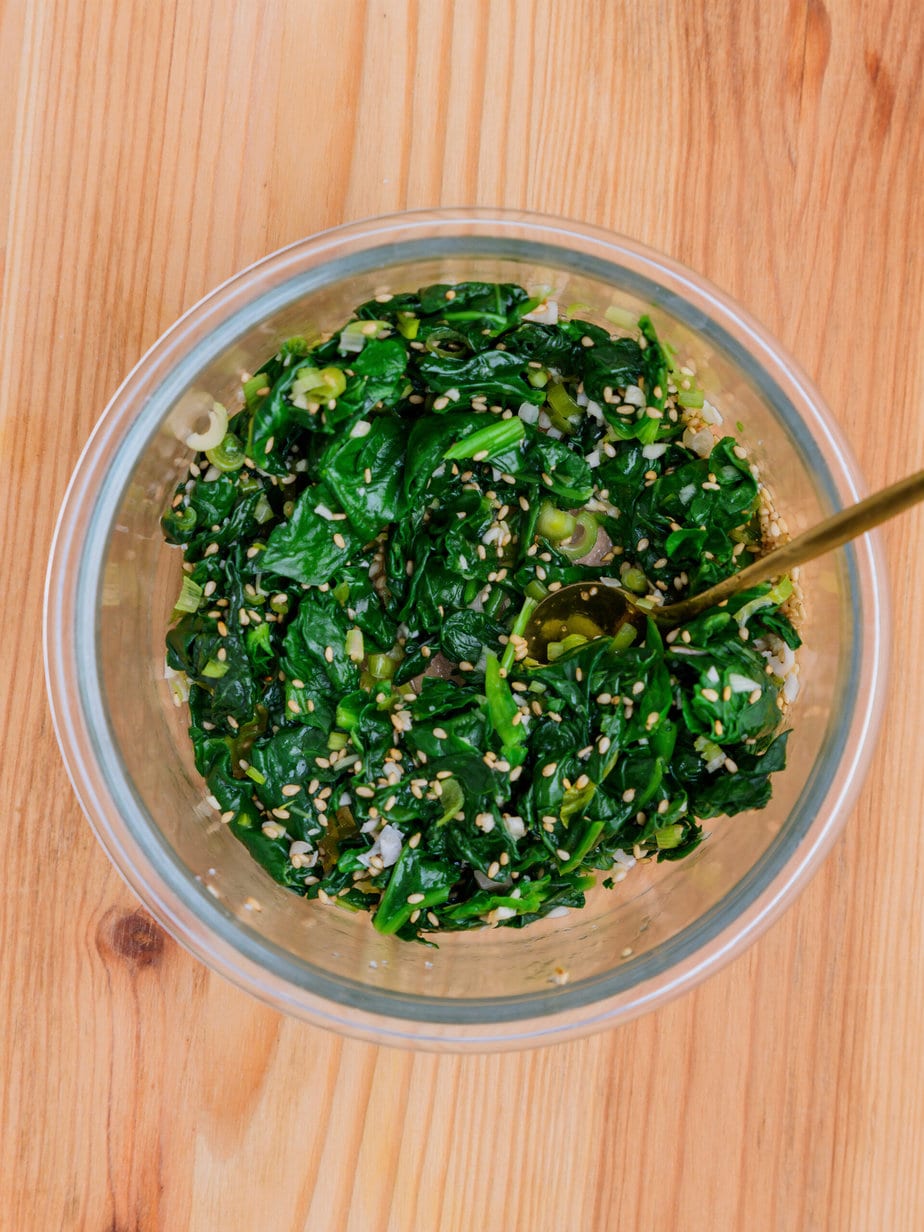
Beyond their traditional role as side dishes, these banchan are often creatively repurposed in the preparation of Bibimbap, where they transform into key components, enriching the dish with their diversity. This common practice in South Korea illustrates both an economical and respectful approach to food, where leftovers are valued to create a flavorful dish
The Main Ingredients of Bibimbap
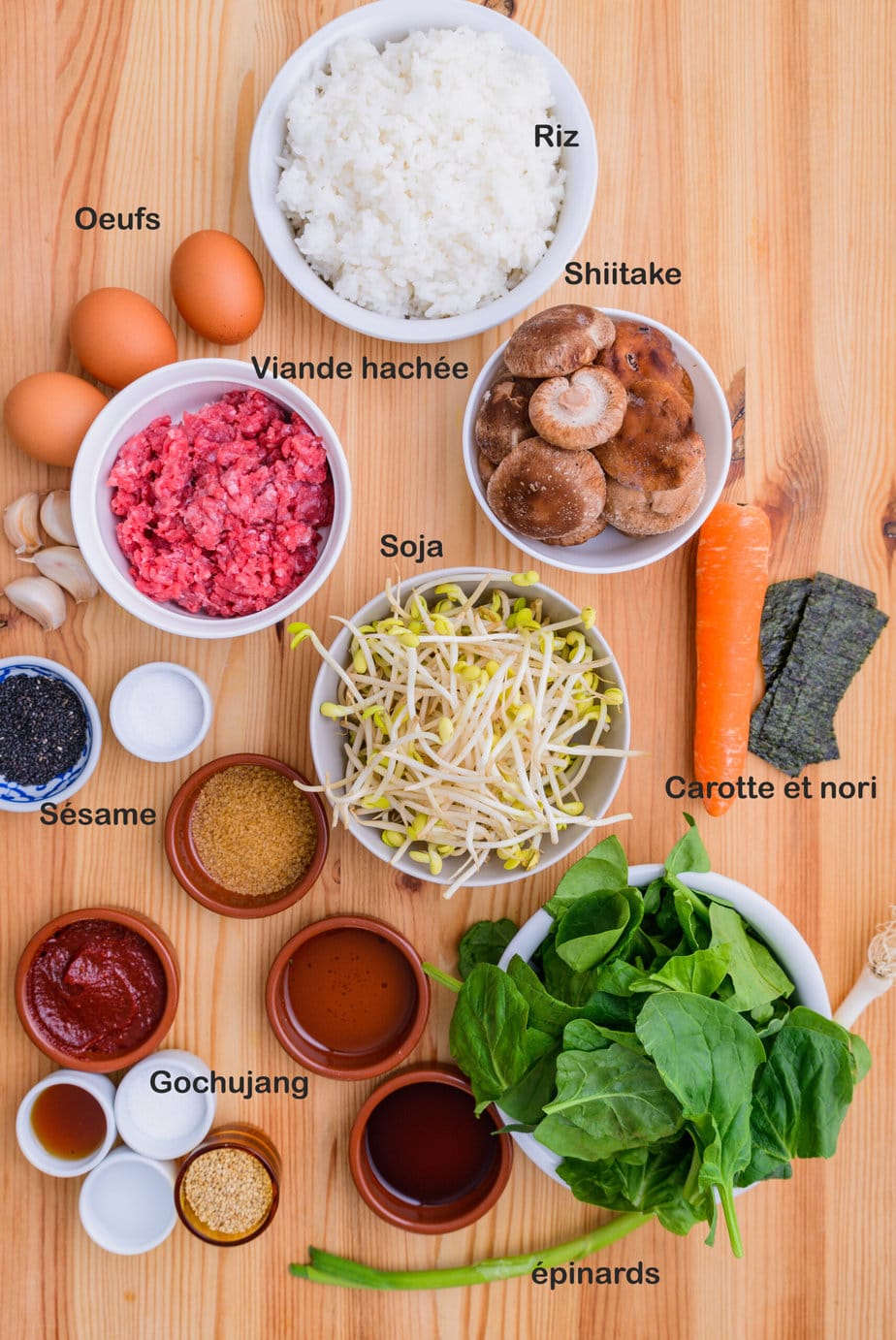
The bean sprouts: used to prepare a quick banchan, called Kongnamul, you can find them in all supermarkets
The light soy sauce: essential for its umami and salty touch
Sesame seeds: choose the color you want, they add a nice little flavor
Rice vinegar: essential for the particular touch of acidity it brings
Sesame oil: You can replace it with peanut oil, but I’ll tell you: it contributes greatly to the taste
Korean dried seaweed: Simply use nori
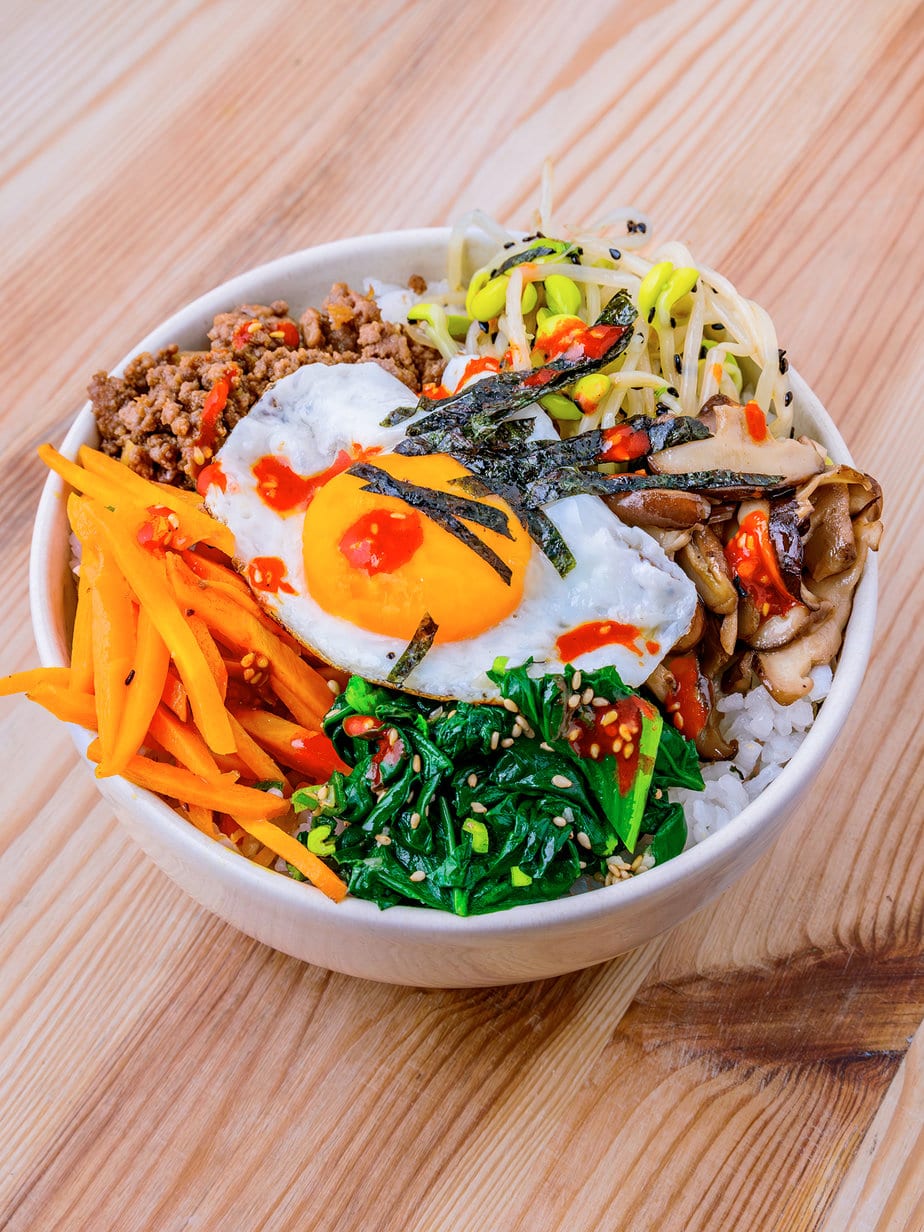
Authentic Korean Bibimbap
Equipment
- 1 Wok
Ingredients
Main Ingredients
- 100 g of ground beef ideally 30% fat content
- 250 g of seasoned spinach see seasoning below
- 350 g of seasoned mung bean sprouts see seasoning below
- 100 g shiitake mushrooms thinly sliced
- 120 g of carrots
- 0.5 teaspoon salt
- 2 portions of cooked rice
- 2 eggs
- Cooking oil
- Seasoned grilled seaweed cut into thin strips
Marinade
- 2 cloves garlic chopped
- 1 tablespoon light soy sauce
- 1 tablespoon sesame oil
- 1 teaspoon of brown sugar
Bibimbap Sauce
- 2 tablespoons of gochujang
- 1 tablespoon sesame oil
- 1 tablespoon of sugar
- 1 tablespoon water
- 1 tablespoon of sesame seeds
- 1 teaspoon rice vinegar
- 1 teaspoon garlic chopped
Spinach
- 250 g of baby spinach
- 1 teaspoon salt
- Water for boiling
Sauce for Spinach
- 1 teaspoon green onions finely chopped
- 0.5 teaspoon garlic chopped
- 0.25 teaspoon salt
- 1 teaspoon of white sesame seeds
- 1 tablespoon sesame oil
Bean Sprouts
- 350 g of fresh mung bean sprouts
- 1 teaspoon salt
- Water for boiling
Sauce for Bean Sprouts
- 1 teaspoon green onions finely chopped
- 0.5 teaspoon of minced garlic
- 0.5 teaspoon salt
- 1 teaspoon of black sesame seeds
- 1 tablespoon sesame oil
Instructions
Meat Preparation
- Mix the ground beef with the marinade. Marinate the meat for about 30 minutes.
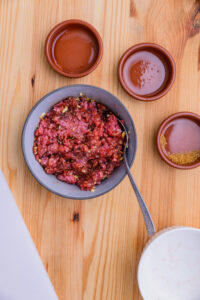
- Add a little cooking oil to a wok and cook the meat over high heat for 3 to 5 minutes.
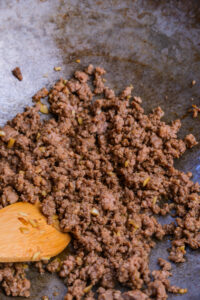
Bibimbap Sauce
- Mix the Bibimbap sauce ingredients in a bowl.
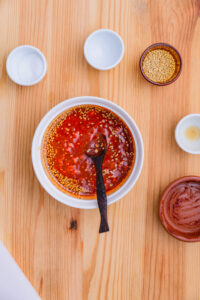
Spinach
- Wash them in cold water. Bring the water to a boil with salt
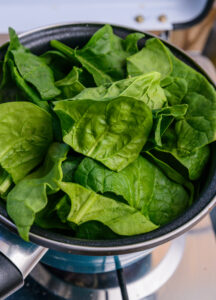
- Blanch the spinach for 30 seconds, then rinse under cold water.
- Drain and squeeze to remove excess water. Cut the spinach and mix with the spinach sauce.
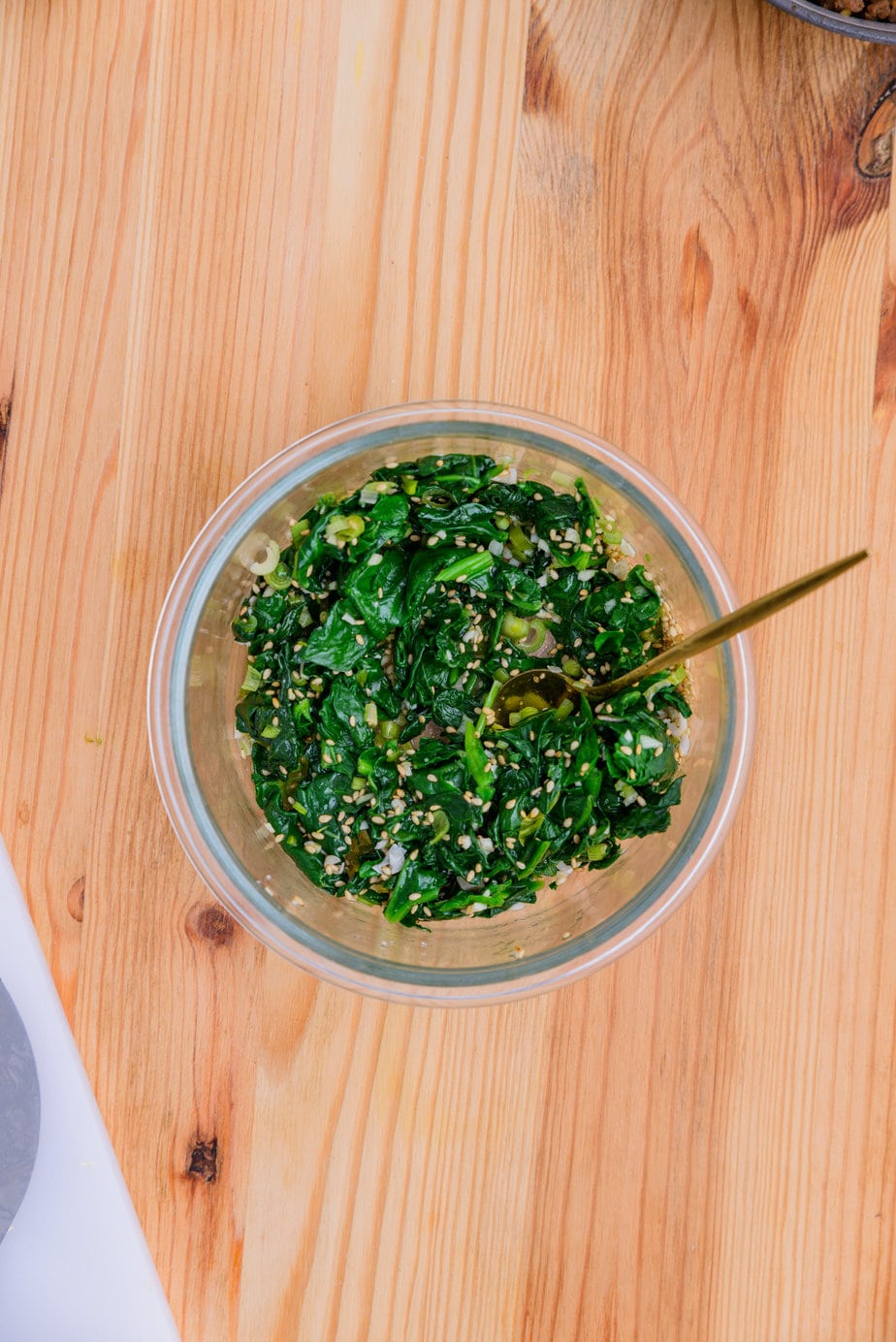
Bean Sprouts
- Rinse them and bring the water to a boil with salt.
- Blanch the sprouts for 1-2 minutes, then rinse with cold water.
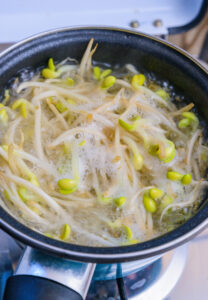
- Drain, squeeze to remove excess water, and mix with the bean sprout sauce.
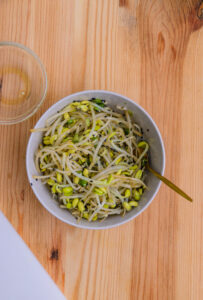
Carrots and Mushrooms
- Peel and julienne the carrots.
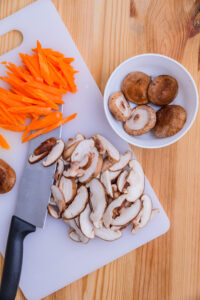
- Clean and slice the mushrooms.
- Cook separately in a wok with a little oil and 1/4 teaspoon of salt each over medium-high heat for 2 to 3 minutes.

Eggs
- Make fried eggs or prepare them according to your preference.

Assembly
- Put the rice in a bowl.
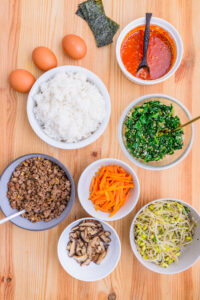
- Add the meat, assorted vegetables, seasoned seaweed, Bibimbap sauce, and the egg on top of the rice. Serve.
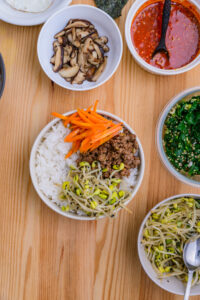
Notes
Nutrition
Culinary sources
For this recipe, I was inspired by the one from the blog “My Korean Kitchen”
